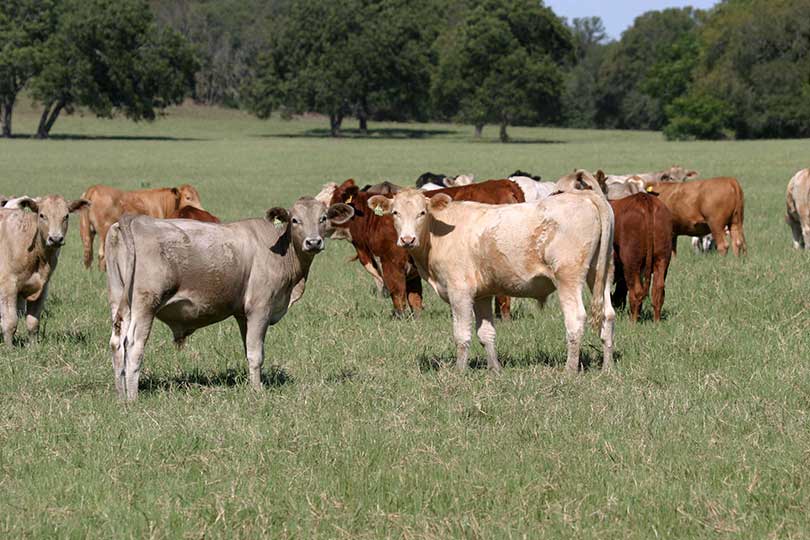By Julie Tomascik
Editor
American beef could soon be at the center of Chinese plates.
According to the U.S. Department of Agriculture (USDA), the agency has finalized protocols for U.S. beef to once again have access to China’s growing middle class.
U.S. Secretary of Agriculture Sonny Perdue said the announcement was “a great day for the United States and, in particular, for our cattle producers, who will be regaining access to an enormous market with an ever-exploding middle class.”
The specified requirements for exports to China include:
- Beef and beef products must be derived from cattle that were born, raised and slaughtered in the U.S., cattle that were imported from Canada or Mexico and subsequently raised and slaughtered in the U.S., or cattle that were imported from Canada or Mexico for direct slaughter;
- Cattle must be traceable to the U.S. birth farm using a unique identifier, or if imported to the first place of residence or port of entry;
- Beef and beef products must be derived from cattle less than 30 months of age;
- Chilled or frozen bone-in and deboned beef products are eligible for shipment. For a complete listing, refer to the FSIS Export Library; and
- Carcasses, beef and beef products must be uniquely identified and controlled up until the time of shipment.
“I commend the hard work of Secretary Ross, Secretary Mnuchin, Trade Representative Robert Lighthizer and our USDA representatives,” Perdue said. “Without their dedication and persistence, this would not have been possible. I have no doubt that as soon as the Chinese people get a taste of American beef, they’ll want more of it.”
Click here to view the final details from USDA.
Beef trade with China halted in 2003 following the discovery of bovine spongiform encephalopathy (BSE), or mad cow disease, in the U.S.
The plan calls for easing restrictions that have been in place for more than 13 years.
“As the number one cattle-producing state in the nation, Texas stands to benefit from this trade agreement,” Tracy Tomascik, associate director of Commodity and Regulatory Activities for Texas Farm Bureau, said. “The high quality, flavorful beef that Texas and American ranchers produce can quickly become a staple with the growing Chinese middle class.”
The initial announcement came May 11 as part of the U.S.-China 100-Day Action Plan.
Exports to China alone could be worth more than $2 billion to U.S. agriculture, according to the American Farm Bureau Federation (AFBF).
“As China improves economically, more people moving into the middle class, they’re looking to improve their diets and then they’re looking to purchase more beef,” Dave Salmonsen, AFBF senior director of Congressional Relations, said. “Currently, most of their beef is coming in from Argentina, Uruguay, Brazil, Australia, but there certainly is an opportunity for our grain-fed U.S. beef.”
Shipments of U.S. beef should set sail to China by July 16.


i think is is great that we can help out our farmers and ranchers, but to say we have more beef than we can consum is misleading to say the least. with the help of lobbist and politcal insiders beifits on welfare keep going up. which means my taxes keep going up. when i was young we ate pork, and chicken pretty regular beef was for sunday dinner or a holiday. i think it is great that people can eat whatever they want, i just want them to do it with no cost to me. the more beef we are able to sell outside the USA the higher the cost will be at the store. that means the cost of welfare will go up ( i include all farmers and ranchers who take money from the goverment as being on the welfare train) therefore they will take more money from me so before you get to giddy over this think a little more on how it will effect us all. Charlie J. Whitt
Here’s a little more thought.
First of all things – You’ll be really disappointed to find out farmers without a safety net program (what you called a welfare train) leads to added risk for that farmer. That means more farmers are likely to go out of business because of price volatility and a subsequent decrease in food supplies follows. How do you think U.S. food prices will change with less food around. You can argue that we would import the food we need. But who grows it? Are their regulations as safe as ours?
Even though it doesn’t say so in this article you’re wrong about how much beef we consume in the U.S. each year. Americans like certain parts of the carcass and would rather substitute the unwanted parts for other proteins like pork or chicken. Those unwanted parts need a home too and often foreign consumers will pay more for it than an American. So market access like this is important. Ranchers need to stay profitable and their livelihoods depend on it. Your approach is short sighted. You want lower taxes. Most folks do too – including ranchers. But don’t tell them who they can’t sell their beef to just so you can have an oversupply here and decrease the value of their cattle and ultimately your beef prices.
If you’re worried about welfare and taxes you should think a little more about those things in particular and leave trade out of it.